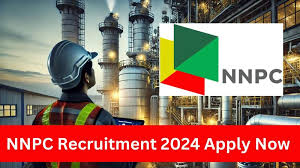How To Create a Winning Sales Proposal

In an increasingly competitive marketplace, the ability to craft an outstanding sales proposal can be the crucial difference between success and failure. In this article, we’ll explore the key steps to creating the best sales proposals that stand out and position you to win that all-important deal.
Crafting the Executive Summary: Capturing Attention Right Away
An executive summary is your first opportunity to hook a potential client’s attention. It should succinctly outline the main points of your proposal, emphasizing the benefits and solutions tailored to the client’s needs. This section acts as an elevator pitch; it should be compelling and convey the essence of your proposal, prompting the reader to delve deeper into the document. Keep it brief but ensure it’s packed with substance.
The most effective executive summaries are clear and devoid of jargon. It’s essential to prioritize the client’s perspective, focusing on how your services can resolve their specific challenges. Making a strong case in your executive summary sets a positive tone for the rest of your document. To truly stand out, integrate a sense of your company’s brand and ethos into the writing.
Understanding Your Client’s Needs: Tailoring the Sales Proposal

Before diving into your service offerings, demonstrate that you thoroughly understand the client’s needs and business environment. Show that you have done your homework by mentioning specific challenges and opportunities relevant to the prospect’s industry. Presenting a grasp of their situation significantly increases the perceived value of your proposal.
Customizing the sales proposal to each specific client can distinguish your offer from competitors who might employ more generic approaches. By referencing past conversations, correspondence, or company news, you can show attentiveness and dedication to client-specific details. This level of personalization indicates that you view the relationship as unique, not just another business transaction.
Presenting Your Solution: Highlighting Unique Value Propositions

After establishing a firm understanding of the client’s needs, it’s time to present your solution, focusing on your unique value proposition. What sets your services or products apart from the competition? This is where you articulate the benefits of your offerings, detailing how they resolve the client’s issues and contribute to their goals.
Be specific about your offerings, using clear headings and concise language for better readability. Potential clients should be able to quickly identify the solutions you’re proposing and understand how they fit into their overall strategy. Emphasize features and benefits that align directly with the client’s objectives.
Visual aids such as charts, graphs, and infographics can be extremely helpful in breaking down complex solutions into accessible visual summaries. They also serve to make your proposal more engaging. A well-placed chart explaining the return on investment (ROI) can be a pivotal part of the proposal, showcasing the tangible value the client stands to gain.
The Power of Persuasive Testimonials and Case Studies

Nothing speaks louder than success stories. Including testimonials and case studies in your proposal not only adds credibility but also provides concrete examples of your past successes. These narratives should be relevant to the prospect’s situation, showing how your services or products have effectively solved similar problems in the past.
Pricing Strategies and Closing Statements: Sealing the Deal

A successful sales proposal communicates value, but it must also be transparent and direct about pricing. Your pricing strategy should balance competitiveness with a demonstration of value, making it clear to the client that the investment is justified. Transparent and straightforward pricing tables are useful tools to avoid any potential confusion or suspicion.
Breaking down the pricing into logical parts can help clients understand what they’re paying for. This segmentation can be by service, product, or even timeline, depending on the context of the sale. Always ensure that the pricing aligns with the value propositions previously highlighted in the proposal.
The closing statement of your sales proposal is the call to action. This is where you succinctly reiterate the benefits and prompt the next steps. It should be confident and motivate the reader to make a decision, whether that’s to set up a meeting, sign a contract, or take another desired action. Concluding on a personal note, expressing excitement and commitment to working with the client can help end the proposal on a high note. Show enthusiasm for the prospect of collaborating and stress your dedication to helping them achieve their goals.
Altogether, a winning sales proposal faithfully represents your understanding of the client’s problems, showcases your solutions, and persuasively argues the return on investment.







